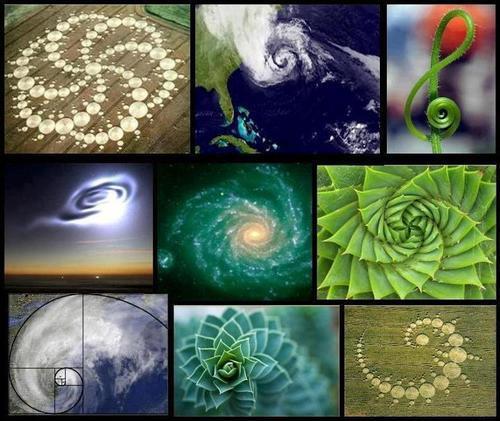

Final Project – A creative project, 5-7 page paper, and 5-10 minute presentation.Any additional readings will be made available in class. Available in the CIIS bookstore or over the Internet. Please purchase: Michael Schneider’s, A Beginner’s Guide to Constructing the Universe: Mathematical Archetypes of Nature, Art, and Science, New York: HarperCollins Publishers, 1995.There will be one online assignment due Wednesday each week between classes. Participation – discussion and class activities, in person and online.We will take one 15 minute break in the morning and the afternoon, and break for an hour and a half for lunch Punctuality is important and attendance is mandatory. Integrate mathematics into one’s conceptions of interdisciplinary studies.(Includes working with fractions, decimals and percents.)

#Sacred geometry in nature series
Understand the Fibonacci Series & Golden Mean.Identify and understand naturally occurring fractals and fractals created mathematically.
 Be able to recognize and utilize symmetry operations (reflection, translation, rotation, and dilation via graphing and iteration). Understand links between mathematics and patterns found in nature. Far from explaining away the mystery and beauty of the natural world, understanding of the governing laws can serve to exponentially deepen one’s awe and appreciation of the mysterious world we inhabit and our participation in it. This class welcomes students from a wide range of mathematical backgrounds and aims to help students build a relationship of fascination, trust, and facility with shapes, numbers, and equations. The recurrence of these themes imbues a timeless, sacred quality that begs the question, “What do they mean?” This class also explores the underlying principles, such as chaos theory and cymatics, that seem to generate these patterns and ponders their significance in historical and scientific dialog. Through readings, independent research, and fieldwork, creative and geometrical exploration students will learn to identify these types of patterns in the surrounding world and to create them. The Fibonacci sequence, the Golden Mean, and fractals appear over and over again plants, crystals, coastlines, animals, religion, art, architecture, music, literature, and economics, etc. Kerri Welch, mathematical patterns emerge in the natural world and human creations across time and discipline.
Be able to recognize and utilize symmetry operations (reflection, translation, rotation, and dilation via graphing and iteration). Understand links between mathematics and patterns found in nature. Far from explaining away the mystery and beauty of the natural world, understanding of the governing laws can serve to exponentially deepen one’s awe and appreciation of the mysterious world we inhabit and our participation in it. This class welcomes students from a wide range of mathematical backgrounds and aims to help students build a relationship of fascination, trust, and facility with shapes, numbers, and equations. The recurrence of these themes imbues a timeless, sacred quality that begs the question, “What do they mean?” This class also explores the underlying principles, such as chaos theory and cymatics, that seem to generate these patterns and ponders their significance in historical and scientific dialog. Through readings, independent research, and fieldwork, creative and geometrical exploration students will learn to identify these types of patterns in the surrounding world and to create them. The Fibonacci sequence, the Golden Mean, and fractals appear over and over again plants, crystals, coastlines, animals, religion, art, architecture, music, literature, and economics, etc. Kerri Welch, mathematical patterns emerge in the natural world and human creations across time and discipline.







 0 kommentar(er)
0 kommentar(er)
